
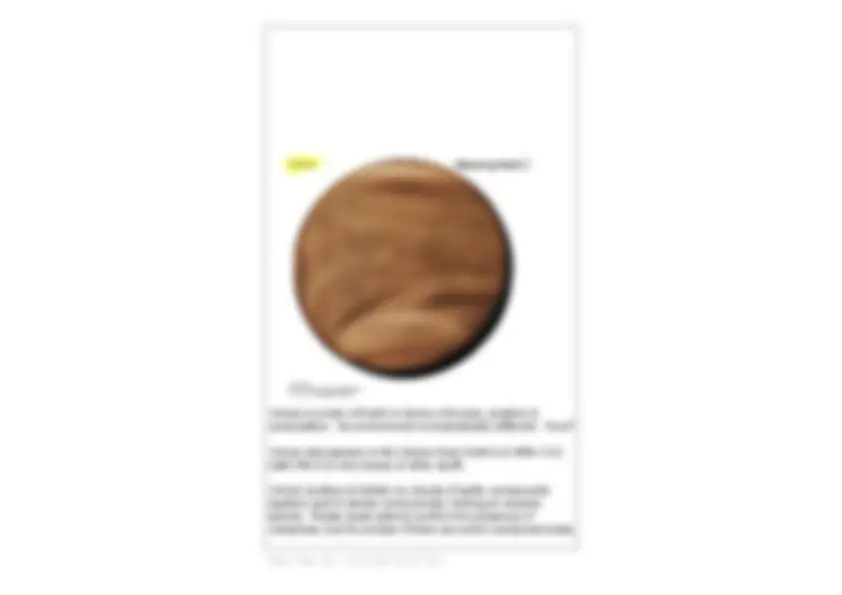
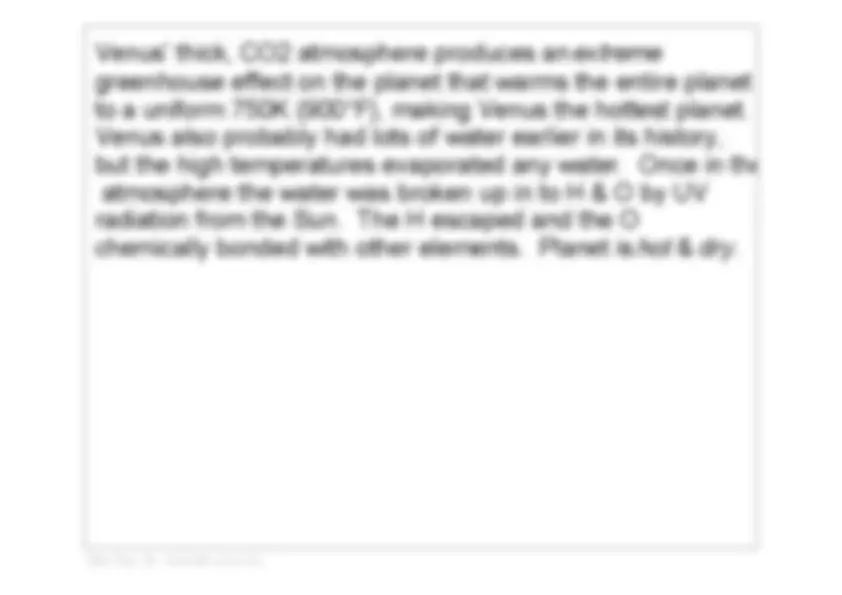
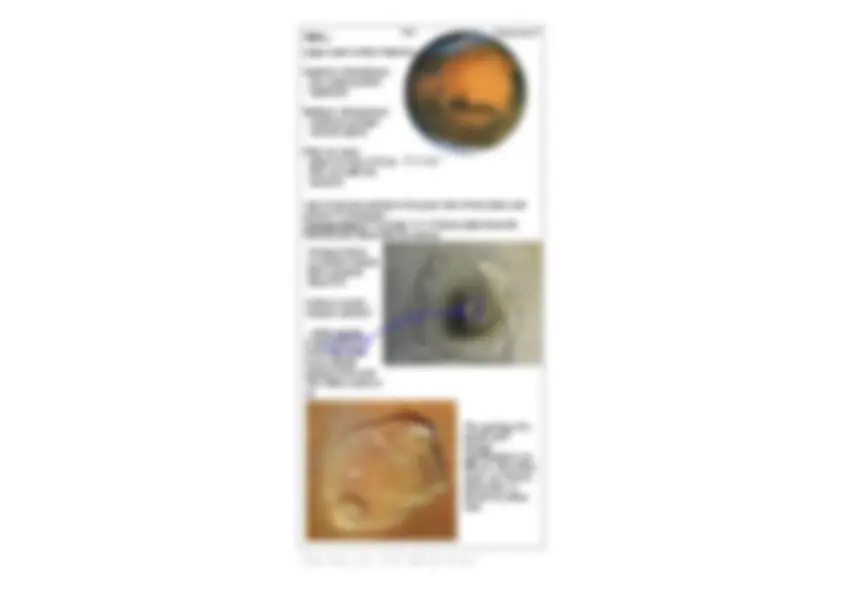
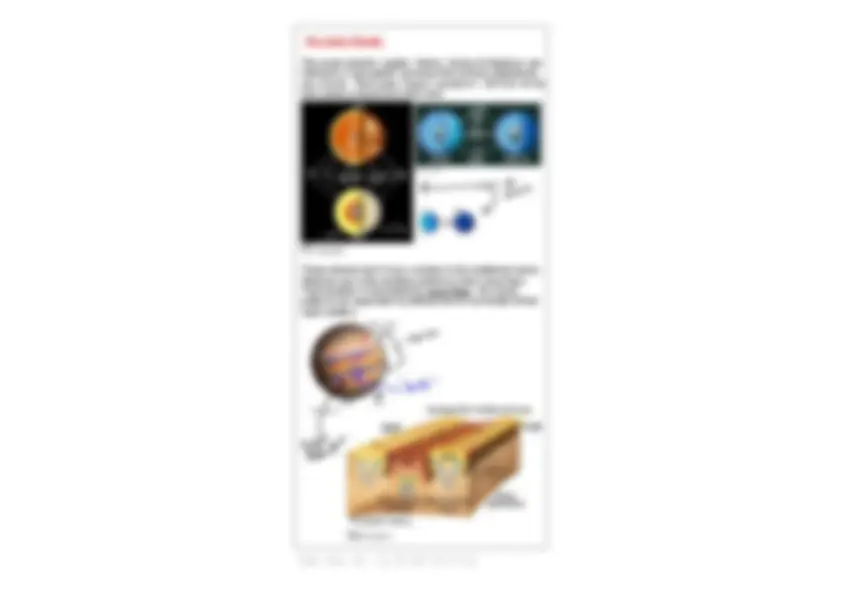
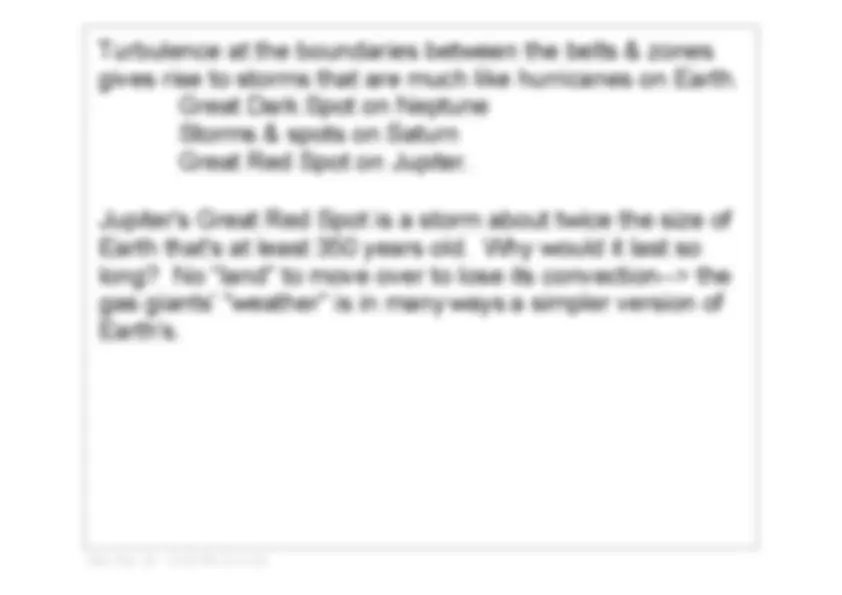
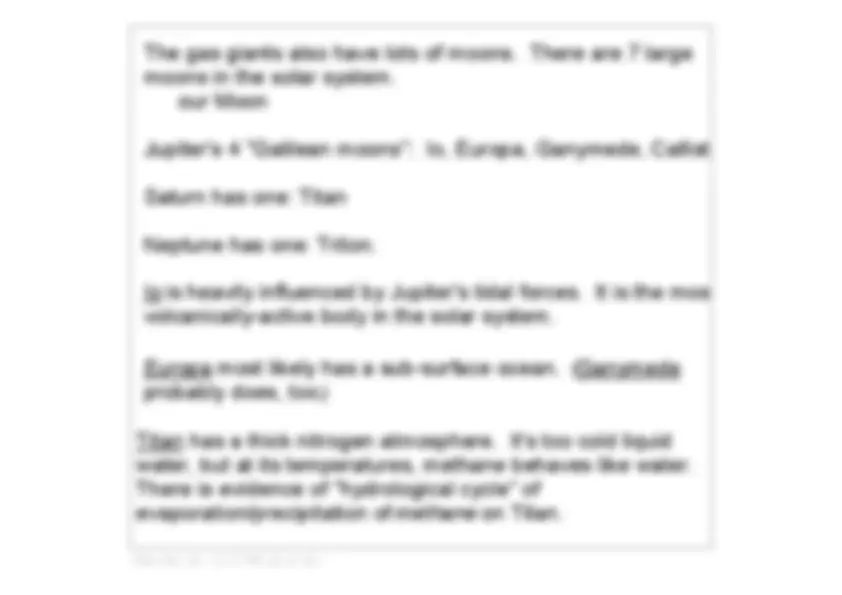


Study with the several resources on Docsity

Earn points by helping other students or get them with a premium plan


Prepare for your exams
Study with the several resources on Docsity

Earn points to download
Earn points by helping other students or get them with a premium plan
Community
Ask the community for help and clear up your study doubts
Discover the best universities in your country according to Docsity users
Free resources
Download our free guides on studying techniques, anxiety management strategies, and thesis advice from Docsity tutors
Insights into the unique geological features of mercury and venus, including the formation of mercury's scarps and venus' extreme greenhouse effect. The text also touches upon the presence of water and volcanic activity on mars, as well as the weather patterns and moons of the gas giants.
Typology: Study notes
1 / 11

This page cannot be seen from the preview
Don't miss anything!







AfternoonMon & Tue labs night in labsdressWarf (^114) warm *Test 2 is tomorrow.... Mercury
MercuryOne feature resemble that is our prevalent Moon inon size Mercury & surface that isappearance. not as common 100 km long) on Earth over or 1 kmthe highMoon that isscarps we think long formed cliffs as(several the cooled and shrunk.
Whyscarps, does and Mercury the Moon have & Earththe long don't? Evidencea larger (by indicates percentage) that Mercury iron core has than Earth or the Moon. Beingcooled smaller from its than molten Earth, state, it would the metallic cool quicker. core would As Mercury have shrunk.underneath The it. surface fractures as the core shrunk out from Theless Earthshrinkage wouldn't 2) larger, have soscarps it's still 1) smallerhotter and metallic hasn't core shrunk asfeatures. much 3)The erosion Moon &wouldn't tectonic have activity scarps would due destroy to not having a large metallic core.
Mercury has a weak, but definite magnetic field. It appears to be a field created by an active dynamo effect, implying that the core is not completely solidified. This is an area of continued interesthow exactly is the field formed?
Venus' thick, CO2 atmosphere produces an extreme greenhouse effect on the planet that warms the entire planet to a uniform 750K (900°F), making Venus the hottest planet. Venus also probably had lots of water earlier in its history, but the high temperatures evaporated any water. Once in the atmosphere the water was broken up in to H & O by UV radiation from the Sun. The H escaped and the O chemically bonded with other elements. Planet is hot & dry.
Mars... Largescale surface features: Southernold, craterpocked Hemisphere: highlands Northernrelatively Hemisphere: younger volcanic plains Polarwater ice ice caps: and CO2 ice thatseasons vary with the Lotsextinct of (?)volcanic volcanoes. activity in the pastlots of lava flows and OlympusEverest) andMons about 27 km 600 high km (~2across. 1/2 times taller than Mt. Olympusis a shield Mons volcano withslope a togradual it. Isvolcanic there current activity? incrater the calderascounts ofnoes the indicate big volca activity 100 million in the years past or so. Theplanet geology can't of a changesignificantly in as littleyears, as so (^100) if itmillion was activeshould then, be active it now.
Mars' Atmosphere Mars' atmosphere is ~1/150 as thick as Earth's. It is so thin that the boiling point of water is just above freezing (0°C/32°F).
The planet is also cold: typical nighttime temp: 150K (190°F) typical daytime temp: 250K (10°F) maximum temp (summer in S. Hemi.): 300K (80°F)
Composition: 95.3% CO2 2.7% N traces of argon, oxygen, water vapor, carbon monoxide...
End of Material for Test 1
The Outer Planets Therefered jovian to aplanetsJupiter, "gas giants" because Saturn, theirUranus primary & Neptuneare ingredients areand Hoverlay & He. aTheir liquid outer and (^) rocky"layers" core. consist of ~ 3/4 H & 1/4 He
TheseWhat we planets see is don't the weatherhave a surface patterns in in the their traditional cloud tops. sense. Theirpatterns weather are separated is dominated by latitude byzonal due flows to convectio the cloudn & their rapid rotation.
The gas giants also have lots of moons. There are 7 large moons in the solar system. our Moon
Jupiter's 4 "Galilean moons": Io, Europa, Ganymede, Callisto
Saturn has one: Titan
Neptune has one: Triton.
Io is heavily influenced by Jupiter's tidal forces. It is the most volcanicallyactive body in the solar system.
Europa most likely has a subsurface ocean. ( Ganymede probably does, too.)
Titan has a thick nitrogen atmosphere. It's too cold liquid water, but at its temperatures, methane behaves like water. There is evidence of "hydrological cycle" of evaporation/precipitation of methane on Titan.
Title: May 18 12:17 PM (10 of 10)
Attachments